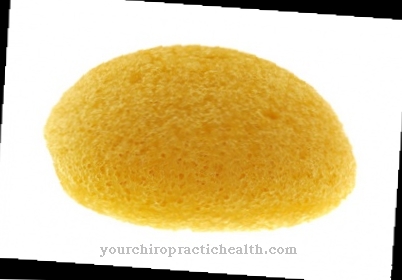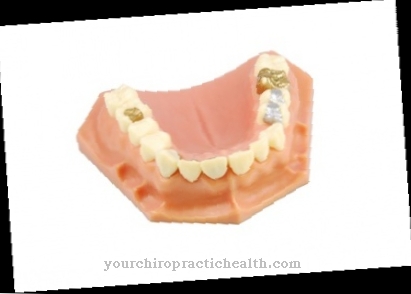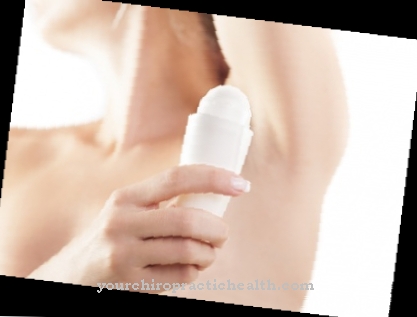A Heart valve replacement is a prosthetic replacement for heart valves when they no longer work properly. The primary goal of heart valve replacement is to avoid chronic heart failure.
What is a heart valve replacement?

Basically, the human heart has four valves: aortic valve, pulmonary valve, mitral valve and tricuspid valve. When the heart is beating, they prevent blood from flowing back so that the heart can pump it efficiently around the body. If the heart can no longer perform, the blood backs up in the organs, among other things, and causes damage there. In particular, edema occurs, which is water retention. Lung and leg edema are very common and cause major problems.
In order to give the heart back some of its pumping function, a heart valve replacement is used surgically. The indication for this depends on the symptoms and objective criteria. These include, for example, the remaining ejection capacity and the condition of the flaps themselves. At least in the initial stage, only one valve is usually affected, so that replacing all four heart valves at the same time is an absolute rarity.
Shapes, types & types
A basic distinction is made between mechanical and biological heart valve replacement. Mechanical keys are largely made of metal and are artificially manufactured. Biological valves, on the other hand, come from animals or humans and are transplanted. Pig heart valves, for example, are very common. Both valve replacement types have both advantages and disadvantages, so that the selection should be adapted to the patient's special situation.
Mechanical heart valves have a very long service life, which, according to projections from laboratory tests, can be 100 to 300 years. Biological heart valves, on the other hand, have to be replaced after a few years because they age and calcify even faster than the body's own tissue. This disadvantage has to be taken into account especially with children. Mechanical valves, however, activate the body's own coagulation system through their metal surface. This leads to an increased risk of thrombosis and makes anticoagulative treatment necessary for life.
Mechanical valve replacement is generally used if the patient still has a long life expectancy and there are no contraindications for anticoagulants. However, the individual situation must always be taken into account, so that there are no irrefutable rules as to when which replacement has to be made. The use of biological valves in children and, conversely, mechanical valves in older adults is at least not entirely excluded.
Structure & functionality
There are many different types of mechanical heart valves that differ slightly in their functionality. All mechanical flaps consist of a metal body and a frame with a polyester sleeve. Due to this design, all of these valves have in common that they cause a noise that is perceptible when you listen carefully, the so-called prosthesis click. The noise development is based on the fact that when the valve closes, the valve wings hit the valve ring. However, the noise also has a positive side effect: it becomes duller and quieter when deposits have formed on the valve replacement and thus indicates any problems that may be present.
The tissue of biological valves comes either from humans or from animals. Valve replacement of human origin is also known as a homograft. If the valve tissue comes from animals, it is a xenograft. A relatively new possibility is to colonize scaffold structures with the patient's own cells and use them to produce a valve replacement. This technique, known as tissue engineering, is still very rarely used nowadays. Biological flaps are also surrounded by a polyester sleeve to make sewing in easier.
A special case of the valve replacement technique is the so-called Ross operation. This procedure is used when there is an aortic valve defect in a child or young adult. It is then surgically replaced by the patient's own pulmonary valve, which is of significantly better quality than any artificial valve. Because the pulmonary valve is generally exposed to less pressure than the aortic valve, it can then be replaced by a biological valve.
Medical & health benefits
After a successful valve implantation, the patient is partly completely symptom-free. Health problems such as edema and reduced performance should decrease significantly. In order to avoid complications in the further course, extensive follow-up care is very important.
After a heart valve operation, the patient should first be monitored in an intensive care unit. He can then be transferred to a cardiac surgery or cardiological ward. The hospital stay usually lasts one to two weeks. This is usually followed by a stay of several weeks in rehab, during which the physical strain is gradually increased in a controlled manner.
After about three months, the first follow-up should be done by echocardiography. The function and appearance of the flaps are assessed here. In the case of mechanical heart valve replacement, in particular, anticoagulant treatment is very important so that thrombosis does not occur. It is done with drugs such as phenprocoumon or warfarin, which shut down the body's own coagulation. The dosage is also made dependent on the type of prosthesis implanted. After the implantation of a biological valve, the medication must be taken for about three months, while with mechanical valves, lifelong therapy is often indispensable.
Particular attention should be paid to endocarditis prophylaxis after heart valve replacement: This is recommended for all procedures in the oropharynx, because otherwise bacteria from this area can settle on the heart valves and lead to serious infections there.



.jpg)





.jpg)



.jpg)



.jpg)







.jpg)


